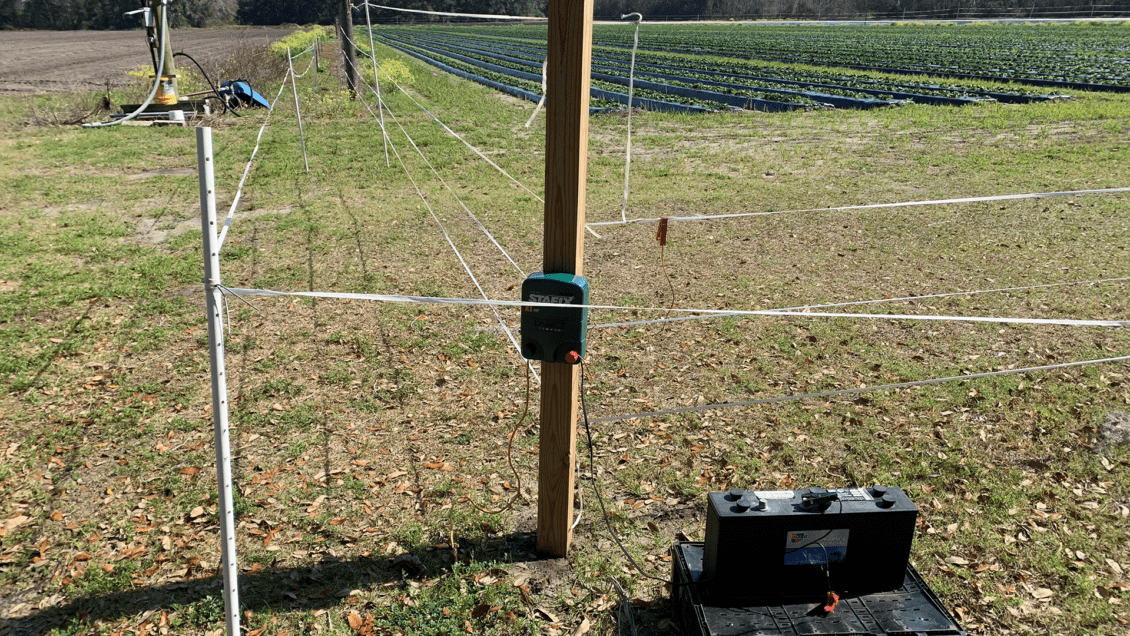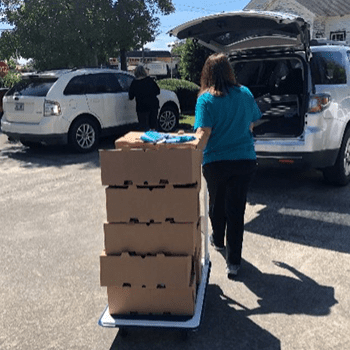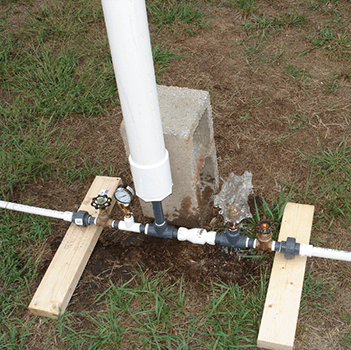
What do peanut aflatoxins, aquaponics, integrated pest management for crops and sealed timber bids have in common? They are all subjects of practical application in Land-Grant Press by Clemson Extension publications.
Written by Clemson Cooperative Extension agents and specialists and University scientists primarily from the College of Agriculture, Forestry and Life Sciences (CAFLS), Land-Grant Press publications are research-based, peer-reviewed scholarly work. But the articles differ from those found in traditional scientific journals by delivering public education on a process or method for issues related to the economy, environment and the well-being of South Carolinians.
Information is only as good as how well it is conveyed to those who need it.
Dara Park, soil and water dynamics professor and Land-Grant Press consulting editor

Envisioned as a partner collection to the wildly popular Home & Garden Information Center (HGIC), which primarily serves residents and Master Gardeners, Land-Grant Press publications provide education for professionals, managers and owners who benefit from Cooperative Extension program offerings, including agriculture, livestock, youth development, natural resources and health.
In 2016, Dara Park and Sarah White, both professors in the CAFLS Department of Plant and Environmental Sciences, began devising a proposal for a new publishing initiative. They knew there was a crucial need for a centralized online repository of Cooperative Extension publications written for stakeholder audiences not served by HGIC. A deliberate strategy for producing and disseminating online and print information would efficiently help Cooperative Extension deliver the most current information to stakeholders.
“Extension specialists and agents needed the means to get science-based, peer-reviewed information to specific stakeholder audiences,” said White. “Peer review is a critical piece because we must ensure the quality and accuracy of every publication so that stakeholders can make timely, informed decisions.”

The initiative began to pick up speed in 2018 when Park and White took on the roles of consulting editors and Dawn Anticole White, director of Clemson Extension publishing and marketing, was brought in as the managing editor to establish editorial policy and oversee a formal publishing process. Her experience launching the Journal of South Carolina Water Resources in 2014 and burgeoning publishing partnerships with Clemson Libraries and Clemson University Press introduced access to the University’s TigerPrints digital repository and publishing platform, which features a backend system to manage large-scale workflow and peer-review communications efficiently.
The Land-Grant Press’s ever-expanding repository currently contains over 140 publications. More than 150 authors and 200 guest reviewers have contributed their expertise. The diversity of topics showcases the spectrum of knowledge imparted by Cooperative Extension program teams, including agribusiness, agronomic crops, forestry and wildlife, horticulture for producers, livestock and forages, rural health and water resources. The three most popular publications to date are vastly different in the subject matter. They include “Homemade Hydraulic Ram Pump for Livestock Water,” “A Key for Aging White-Tailed Deer Using the Tooth Replacement and Wear Technique” and “Watermelon Fungicide Guide.”
Park states that “Land-Grant Press publications offer stakeholders management strategies and applications that can be economically beneficial and are environmentally sound.”

An extensive collection of agronomic crops and horticulture publications provide broad education about pests, cover crops, fungal pathogens, irrigation, precision agriculture, soil health and fertilization for various row crops, vegetables and fruits. Livestock and forages topics for owners and producers include pasture management, beef cattle breeding and equine care. Natural resources authors cover forestry management, irrigation reservoirs, water resources and pond maintenance. Submittals related to rural health and food systems and safety are steadily growing, while crucial agribusiness offerings were expedited in early 2020 to help multiple industries navigate fluid financial challenges and uncertain supply and demand chains.
The publishing program was still relatively new when the coronavirus pandemic took hold. Thomas Dobbins, Clemson Cooperative Extension director, said Extension personnel had to pivot quickly to new methods for delivering education during the height of the pandemic, and increased publishing efforts became a necessity.
“We happened to launch at a very opportune time in 2019 because of the heightened demand for online resources after the pandemic began,” said Dobbins. “Not only did the number of website visitors increase by over 90 percent within one year, but the number of submissions from our specialists and agents also doubled within several months.”
Agents and specialists had a new outlet through which they could significantly expand their audience reach and receive publishing credit toward promotion and tenure for their submittals.
“We built a comprehensive publishing process with specific resources to support authors and the assurance of recognition for their work,” said Dobbins.
The Land-Grant Press editorial guidelines are expanding to accept submittals from Cooperative Extension personnel and scientists at other land-grant universities and build regional publishing partnerships. Guidance for authors regarding preparing and submitting publications is available on the website. Three reviewers and a consulting editor contribute anonymous feedback in the initial review phase, and at least one of the reviewers must be external to Clemson University. The structured review process helps ensure the content of publications is appropriate for the audience and improves comprehension. The majority of reviewers are agents, specialists and scientists from other land-grant universities, and their participation is recognized on the Land-Grant Press website.
“Land-Grant Press publishing is an example of how research and Cooperative Extension act seamlessly, efficiently and effectively to help South Carolinians lead healthy and prosperous lives. Our agents and researchers partner to provide access to practical information that is based on science,” said Keith L. Belli, dean of the College of Agriculture, Forestry and Life Sciences. “I’ve felt all along it could be a distinctive outreach effort for CAFLS, and the volume of traffic to date supports that we are meeting an essential need across the state.”
To date, lgpress.clemson.edu has attracted over 254,000 visitors. The publishing scope is poised for substantial growth this year with the launch of a new series for 4-H Youth Development Curricula. Additionally, a new supplemental content section is being developed to feature research reports from Clemson University Research and Education Centers (RECs), as the practical application focus in many Land-Grant Press publications is generated from REC research.
“I’m also enthusiastic about the recent launch of the Teaching Section,” said Belli. “Thoughtful scholarship about teaching and collaboration with peers allows us to do our best work in the classroom, labs and fields—and strengthens student learning outcomes.”
From the beginning, Park had two main goals: translate science into practical application and ensure quality in the product delivering the education.
“The applied nature is at the forefront of the quality of Land-Grant Press publications,” Park states. “Authors are providing stakeholders with research-based guidance. Information is only as good as how well it is conveyed to those who need it.”

